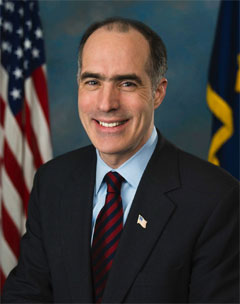Any religion, meanwhile, has its heretics, and global warming is no exception.
That staggeringly anti-scientific statement (page 170) is just one of many, many pieces of outright nonsense from SuperFreakonomics: Global Cooling, Patriotic Prostitutes, and Why Suicide Bombers Should Buy Life Insurance. In fact, human-caused global warming is well-established science, far better established than any aspect of economics.
In other words: it’s illogical to believe in a carbon-induced warming apocalypse and believe that such an apocalypse can be averted simply by curtailing new carbon emissions.
Hard to believe such a staggeringly illogical statement (page 203) comes from Steven Levitt and Stephen Dubner, the same folks who wrote the runaway bestseller Freakonomics: A Rogue Economist Explores the Hidden Side of Everything.
For the record, it’s perfectly logical to believe that — indeed, I daresay most of the world’s leading climate scientists believe that — if you could curtail all new carbon emissions (including from deforestation) starting now (or even starting soon), you would indeed avoid apocaplyse. None, however, would use the loaded word “simply” I’m sure and most, like Hansen, would like to go from curtailing emissions to being carbon negative as soon as possible. The Superfreaks, however, are simultaneously skeptical of global warming science, critical of all mitigation measures, but certain that geo-engineering using sulfate aerosols is the answer.
“Rogue” is a good word for Levitt, but I think “contrarian” is more apt. Sadly, for Levitt’s readers and reputation, he decided to adopt the contrarian view of global warming, which takes him far outside of his expertise. As is common among smart people who know virtually nothing about climate science or solutions and get it so very wrong, he relies on other smart contrarians who know virtually nothing about climate science or solutions. In particular, he leans heavily on Nathan Myhrvold, the former CTO of Microsoft, who has a reputation for brilliance, which he and the Superfreaks utterly shred in this book:
“A lot of the things that people say would be good things probably aren’t,” Myrhvold says. As an example he points to solar power. “The problem with solar cells is that they’re black, because they are designed to absorb light from the sun. But only about 12 percent gets turned into electricity, and the rest is reradiated as heat — which contributed to global warming.
 Impressive — three and a half major howlers in one tiny paragraph (page 187). California Energy Commissioner Art Rosenfeld called this “patent nonsense,” when I read it to him. And Myhrvold is the guy, according to the Superfreaks, of which Bill Gates once said, “I don’t know anyone I would say is smarter than Nathan.” This should be the definitive proof that smarts in one area do not necessarily translate at all.
Impressive — three and a half major howlers in one tiny paragraph (page 187). California Energy Commissioner Art Rosenfeld called this “patent nonsense,” when I read it to him. And Myhrvold is the guy, according to the Superfreaks, of which Bill Gates once said, “I don’t know anyone I would say is smarter than Nathan.” This should be the definitive proof that smarts in one area do not necessarily translate at all.
In olden days, we called such folks Artistes of Bullshit, but now I’m gonna call them FAKERs — Famous “Authorities” whose Knowledge (of climate) is Extremely Rudimentary [Error-riddled? I’m still working on this acronym].
The most famous FAKER was Michael Crichton. I thought Freeman Dyson was the leading FAKER today, but Myhrvold makes Dyson sound like James Hansen. I will devote an entire blog post to the BS peddled here by Myhrvold (who now runs Intellectual Ventures) because I’m sure he’s got the ear of alot of well-meaning, influential, but easily duped, people like Levitt and Dubner.
Here are the howlers in that paragraph for the record:
 1. “The problem with solar cells is that they’re black.” Try googling “solar cells” — (Nathan, you can Bing “solar cells”) — and most of the panels you’ll see are in fact blue. I’ll call this half a howler. Lots of the cells are black. As we’ll see, however, it is NOT a problem. This is a bogus issue.
1. “The problem with solar cells is that they’re black.” Try googling “solar cells” — (Nathan, you can Bing “solar cells”) — and most of the panels you’ll see are in fact blue. I’ll call this half a howler. Lots of the cells are black. As we’ll see, however, it is NOT a problem. This is a bogus issue.
2. These days, lots of solar cells get much higher efficiency than 12 percent. Scientific American writes about “Suntech’s Pluto line of multicrystalline cells, which boasts 17.2 percent efficiency converting one sun’s light into electricity, or Suniva’s ARTisun single silicon crystal cells that can convert 18.5 percent of the sunshine into electricity.” This book is supposedly about solutions available in the near future and billions of dollars are being poured into technologies that could more than double those efficiencies. Indeed, “New solar energy material captures every color of the rainbow.” But, of course, only IV’s unproven and dubious aerosol geo-engineering solution gets the benefit of assumed scientific advances, not real, actual hardware that could start solving the problem now.
 3. The biggest howler from the perspective of a would-be FAKER (and those who are duped by them) is the logical error of failing to ask one simple question: What was the absorbtivity or emissivity of the material that the panel covered up? If you look on Google images, you’ll see that PV panels are often — if not usually — put on roofs or over ground that is quite dark, often black. In a large fraction of cases, the panels contribute less heat reradiation than what they are covering would. This is a complete red herring, a “trivial issue” in the jargon Levitt would normally use.
3. The biggest howler from the perspective of a would-be FAKER (and those who are duped by them) is the logical error of failing to ask one simple question: What was the absorbtivity or emissivity of the material that the panel covered up? If you look on Google images, you’ll see that PV panels are often — if not usually — put on roofs or over ground that is quite dark, often black. In a large fraction of cases, the panels contribute less heat reradiation than what they are covering would. This is a complete red herring, a “trivial issue” in the jargon Levitt would normally use.
4. The way Leavitt and Dubner write the paragraph — “A lot of the things that people say would be good things probably aren’t,” Myrhvold says. As an example he points to solar power. — they have Myrhvold saying all forms of solar power “probably aren’t” a good thing. That is a laughable notion, and I seriously doubt he believes that. But, as we’ll see, this is the Superfreaks style, to overstate or misstate what the people they talk to actually believe.
John O’Donnell, VP Business Development, GlassPoint Solar and a former lead engineer at Princeton Plasma Physics Lab (old bio here, Business Week profile here) just emailed me to be sure I don’t miss the forest for the trees here in debunking this nonsense:
Yes Nathan is howlingly off base. Not because solar panels are (whatever cover with whatever relative emissivity), but because solar panels, like wind turbines and solar thermal power plants, eliminate the emission of CO2 which would otherwise occur from electricity production.
As Ken Caldeira so grippingly points out (and I tried to make graphically clear in my Stanford talk last year) , each molecule of CO2 released thermal energy when it was formed — that’s why we formed it. In the case of electricity generation, about 1/3 of its thermal energy went out a wire as electric power, the rest was released promptly as waste heat. But each molecule of CO2, during its subsequent lifetime in the atmosphere, traps 100,000 times more heat than was released during its formation.
A hundred thousand is a big number. It means that running a handheld electric hairdryer on U.S. grid electricity delivers a planet-warming punch comparable to [the heat directly emitted by] two Boeing 747s operating at full takeoff power for the same time period. The warming is delivered over time, not promptly, but that don’t matter; the planetary heating is accrued, the accountants would say, the moment you hit the switch.
The thermal energy balance for a solar panel runs vastly in the other direction. If our solar panel is pure black, and 14 percent efficient, then for each kWh of electric power that comes out, there are 7 kWh of heat that were absorbed and radiated. But each kWh it generates it eliminates the release of 1.4 pounds of CO2, which during its lifetime in the atmosphere will absorb 210,000 kWh of heat. So the energy balance for the solar panel (when it’s connected to the US grid) is about NEGATIVE 209,993 kWh(heat) per kWh(electric) — since some fossil power plant somewhere is being turned down based on its generation. And hey, if it’s blue instead of black, that might increase to negative 209,995 kWh.
So, yes, Myhrvold is an uber-FAKER, raising issues that are uber-trivial.
As an aside, O’Donnell is a CSP guy, like me, the solar energy that I believe is most promising for large-scale, low-cost, low-carbon power delivery (see “Solar Baseload — a core climate solution“). Naturally, the Superfreaks never mention this in their amateurish take-down of solar.
The reason I’m calling Leavitt and Dubner Superfreaks for short is that Chapter Five, the “Global Cooling” chapter — aka “What do Al Gore and Mount Pinatubo have in common?” — has precious little economics, and what it does have is simply wrong. So the book could easily have been titled Superfreaks. [Note: Most of the book is searchable online.]
The answer is that Gore and Pinatubo’s eruption both suggest a way to cool the planet, albeit with methods whose cost-effectiveness are a universe apart.
Yes, the Superfreaks frame this chapter mostly as their (misguided) view of the science versus the views of that famous non-scientist Al Gore (as opposed to the views of all of the scientists who disagree with the crap they are peddling). That straw man approach gives them the “high” ground.
But by embracing aeresols and rejecting mitigation, they have adopted the identical view of that rogue, thoroughly debunked, non-economist Bjorn Lomborg. Unlike the Superfreaks, CP readers know that Ken Caldeira calls the vision of Lomborg’s Climate Consensus “a dystopic world out of a science fiction story.”
And yet Caldeira is the primary practicing climate scientist the Superfreaks rely on in the chapter! He has responded to many email queries of mine over the weekend so I could characterize his views accurately. He simply doesn’t believe what the Superfreaks make it seem like he believes. He writes me:
If you talk all day, and somebody picks a half dozen quotes without providing context because they want to make a provocative and controversial chapter, there is not much you can do.
One sentence about Caldeira in particular is the exact opposite of what he believes (page 184):
Yet his research tells him that carbon dioxide is not the right villain in this fight.
Levitt and Dubner didn’t run this quote by Caldeira, and when he saw a version from Myrhvold, he objected to it. But Levitt and Dubner apparently wanted to keep it very badly — it even makes their Table of Contents in the Chapter Five summary “Is carbon dioxide the wrong villain?” It fits their contrarian sensibility, but it makes no actual sense.
Here is what Caldeira really believes:
I believe the correct CO2 emission target is zero. I believe that it is essentially immoral for us to be making devices (automobiles, coal power plants, etc) that use the atmosphere as a sewer for our waste products. I am in favor of outlawing production of such devices as soon as possible …
Every carbon dioxide emission adds to climate damage and increasing risk of catastrophic consequences. There is no safe level of emission.
I compare CO2 emissions to mugging little old ladies … It is wrong to mug little old ladies and wrong to emit carbon dioxide to the atmosphere. The right target for both mugging little old ladies and carbon dioxide emissions is zero.
I am in favor of fire insurance but I am also against playing with matches while sitting on a keg of gunpowder. I am in favor of research into geoengineering options but I am also against carbon dioxide emissions.
Carbon dioxide emissions represent a real threat to humans and natural systems, and I fear we may have already dawdled too long. That is why I want to see research into geoengineering — because the threat posed by CO2 is real and large, not because the threat is imaginary and small.
Ouch!
Needless to say, you’d never get that impression from reading Superfreakonomics. Again the authors had a contrarian argument they wanted to push, and they shoe-horned the one true expert they talked to into it. Dystopia.
Dystopia.
I’ll address the other myriad errors and analytical flaws in the chapter in future posts. Their core argument is the same as Lomborg’s, that aerosol-based geo-engineering can substitute for aggressive mitigation, which they repeatedly diss as uneconomic, contrary to virtually all actual independent economic analysis (see “Introduction to climate economics: Why even strong climate action has such a low total cost — one tenth of a penny on the dollar“). They leave the impression Caldeira shares that view. This is what he really believes:
If we keep emitting greenhouse gases with the intent of offsetting the global warming with ever increasing loadings of particles in the stratosphere, we will be heading to a planet with extremely high greenhouse gases and a thick stratospheric haze that we would need to main more-or-less indefinitely. This seems to be a dystopic world out of a science fiction story. First, we can assume the oceans have been heavily acidified with shellfish and corals largely a thing of the past. We can assume that ecosystems will be greatly affected by the high CO2/low sunlight conditions — similar to what Earth experienced hundreds of millions years ago. The sunlight would likely be very diffuse — maybe good for portrait photography, but with unknown consequences for ecosystems.
We know also that CO2 and sunlight affect Earth’s climate system in different ways. For the same amount of change in rainfall, CO2 affects temperature more than sunlight, so if we are to try to correct for changes in precipitation patterns, we will be left with some residual warming that would grow with time.
And what will this increasing loading of particles in the stratosphere do to the ozone layer and the other parts of Earth’s climate system that we depend on?
On top of all of these environmental considerations, there are socio-political considerations: Will we have a cooperative world government deciding exactly how much geoengineering to deploy where? What if China were to go into decades of drought? Would they sit idly by as the Climate Intervention Bureau apparently ignores their plight? And what if political instability where to mean that for a few years, the intervention system were not maintained … all of that accumulated pent-up climate change would be unleashed upon the Earth … and perhaps make “The Day After” movie look less silly than it does.
Long-term risk reduction depends on greenhouse gas emissions reduction. Nevertheless, there is a chance that some of these options might be able to diminish short-term risk in the event of a climate crisis.
I would add the grave risk that that after injecting massive amounts of sulfate aerosols into the atmosphere for a decade or more, we might discover some unexpected bad side effect that just gets worse and worse. After all, the top climate scientists underestimated the speed and scale of greenhouse gas impacts (and the magnitude of synergistic ones, like bark beetle infestations and forest fires).
We would be in incompletely unexplored territory — what I call an experimental chemotherapy and radiation therapy combined. There is no possible way of predicting the long-term effect of the thick stratospheric haze (which, unlike GHGs, has no recent or paleoclimate analog). If it turned out to have unexpected catastrophic impacts of its own (other than drought), we’d be totally screwed.
No surprise, then, that science advisor John Holdren told me in April that he stands by his critique:
The ‘geo-engineering’ approaches considered so far appear to be afflicted with some combination of high costs, low leverage, and a high likelihood of serious side effects.
Even geoengineering advocate Tom Wigley is only defending “a complementary combined mitigation/geoengineering scenario, an overshoot concentration pathway where atmospheric carbon dioxide reaches 530 ppm before falling back to 450 ppm, coupled with low-intensity geoengineering,” with the goal of stabilizing global temperature rise at 2°C, in case we can’t stabilize at 450 ppm. You can see a good discussion of that at the Bulletin of Atomic Scientists‘ expert roundtable response to Alan Robocks’ excellent piece, “20 reasons why geoengineering may be a bad idea.”
Well, stabilizing at 530 ppm requires doing a massive amount of mitigation starting now — only 2 or 3 fewer wedges than what is needed for 450 (see “How the world can (and will) stabilize at 350 to 450 ppm: The full global warming solution“).
Levitt and Dubner and Myhrvold are FAKERs. They simply don’t know what they are talking about.



